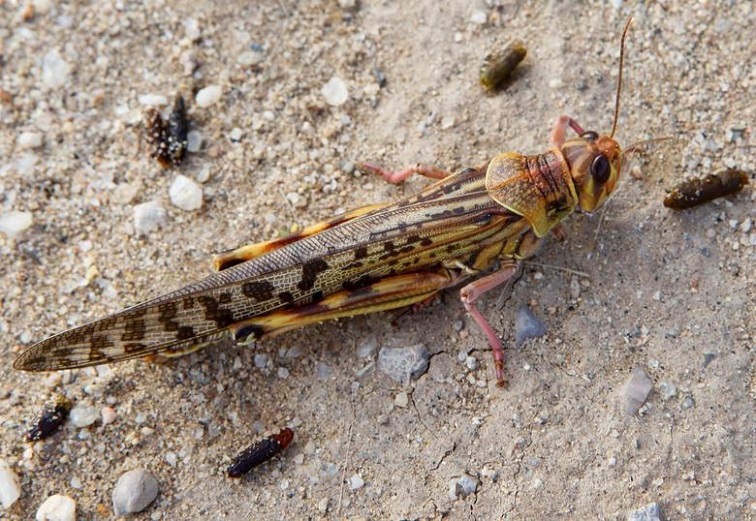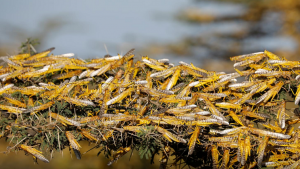The United Nations is to test drones equipped with mapping sensors and atomizers to spray pesticides in parts of East Africa battling an invasion of desert locusts that are ravaging crops and exacerbating a hunger crisis.
Hundreds of millions of the voracious insects have swept across Ethiopia, Somalia and Kenya in what the UN has called the worst outbreak in a quarter of a century, with Uganda, Eritrea and Djibouti also affected.
Authorities in those countries are already carrying out aerial spraying of pesticides but experts say the scale of the infestation is beyond local capacity as desert locusts can travel up to 150 km in a day.
They threaten to increase food shortages in a region where up to 25 million people are reeling from three consecutive years of droughts and floods, say aid agencies.
Keith Cressman, senior locust forecasting officer at the UN Food and Agriculture Organization (FAO), said specially developed prototypes would be tested that can detect swarms via special sensors and adapt their speed and height accordingly.
“Nobody’s ever done this with desert locusts before. So we have no proven methodology for using drones for spraying on locusts,” said Cressman.
“There are already small atomizer sprayers made for drones. But with locusts, we just don’t know how high and how fast to fly.”
The swarms – one reportedly measuring 40 km by 60 km – have already devoured tens of thousands of hectares of crops, such as maize, sorghum and teff, and ravaged pasture for livestock.
By June, the fast-breeding locusts could grow by 500 times and move into South Sudan.
The impact on the region’s food supply could be enormous – a locust swarm of a square kilometre is able to eat the same amount of food in one day as 35 000 people, says the FAO.
Climate scientists say global warming may be behind the current infestations, which have also hit parts of Iran, India and Pakistan.
Warmer seas have resulted in a rise in the frequency of cyclones in the Indian Ocean. This caused heavy downpours along the Arabian peninsula, creating ideal conditions for locust breeding in the deserts of Oman, Yemen and Saudi Arabia.
Researchers are increasingly looking to technology to help provide early warning signs and control locust outbreaks amid fears climate change could bring more cyclones.






